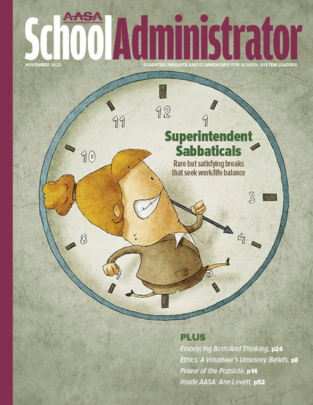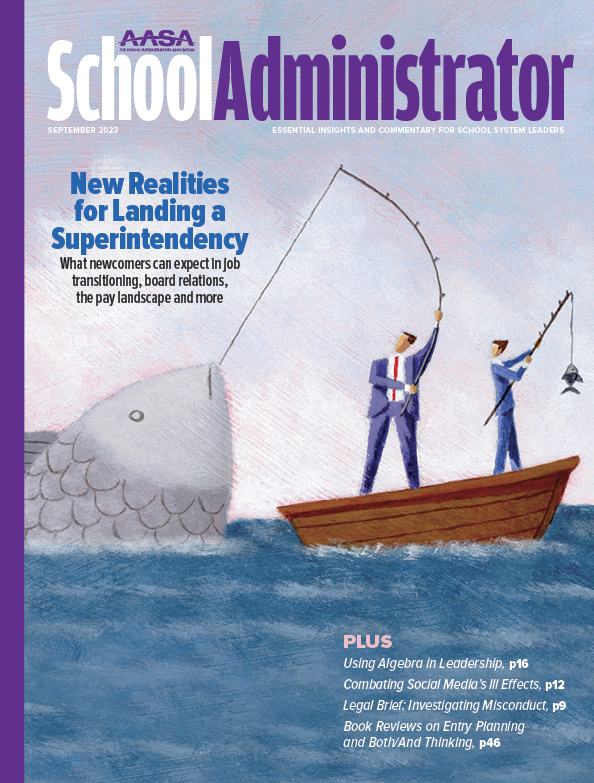School Administrator Magazine
AASA's award-winning magazine provides big-picture perspectives on a broad range of issues in school system leadership and resources to support the effective operation of schools nationwide.

Current Issue
School Administrator: Sustainability and Climate Change
Advertisement
Previous Issues
-
 April 2024: School Administrator
April 2024: School AdministratorThis issue examines how school districts can modify behavioral and operational practices to account for climate change.
-
 March 2024: School Administrator
March 2024: School AdministratorThis issue examines the rise of the four-day school week and the digital learning landscape in the aftermath of COVID-19.
-
 February 2024: School Administrator
February 2024: School AdministratorThis issue examines how superintendents are defending their school districts from cyberattacks and protecting their students’ data.
-
 January 2024: School Administrator
January 2024: School AdministratorThis issue examines some distinctive ways that public schools deliver health services to their communities today.
-
 December 2023: School Administrator
December 2023: School AdministratorThis issue examines the role superintendents can play in legislative advocacy on state and federal levels.
-
 November 2023: School Administrator
November 2023: School AdministratorThis issue showcases how superintendents are balancing work and personal life through extended time off.
-
 October 2023: School Administrator
October 2023: School AdministratorThis issue examines how artificial intelligence and new career skills are making their way into schools and classrooms.
-
 September 2023: School Administrator
September 2023: School AdministratorThis issue examines the new realities about landing, transition into and hiring for a superintendency.
School Administrator Staff
Advertise in School Administrator
For information on advertising with AASA, contact Kathy Sveen at 312-673-5635 or ksveen@smithbucklin.com.
Advertisement
Advertisement






